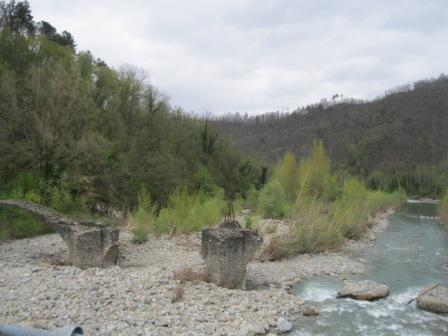
May 14, 2013, by Harry Cocks
Dark Age Climate Change
In recent years historians have challenged the idea of the “Dark Ages.” From the Renaissance onwards many writers began to think of this period in European history, roughly from the fall of Rome in the 5th century AD up to the first millennium, as an era of social and cultural disintegration, lawlessness and barbarism. Historians these days prefer to call this period “late antiquity” or to see it as part of the “early middle ages,” using these terms to stress the continuity of Roman culture and the persistence of monastic learning. However, a recent book by Ross Balzaretti, Associate Professor of Medieval History here in Nottingham, revisits the concept of a European “Dark Age.” In his study of the region of Liguria (Italy’s north-west coast between San Remo and La Spezia and centred on the port city of Genoa), Dr Balzaretti by no means endorses the classic Renaissance view of the silent and barbaric Dark Ages, but he does feel that the concept is not wholly inappropriate, especially given the lack of sources covering this period of Italian history. In a literal sense, he argues, not much is known about most places and people in this region in the period and it is therefore almost impossible to write about ‘what happened’ for most places, with the partial exception of Genoa, the largest settlement in the region. It is also difficult to get into the minds of the people who appeared in the documents, as they left almost no writing about themselves. Usually it is only exceptional individuals or families, such as Emperor Charlemagne (742-814) and the Carolingian monarchs, who left this sort of material behind.
However, other, non-documentary sources tell us a great deal about the region, and also reveal significant facts about the effect of climate change on the population at this time. Using organic materials, such as remains of plant pollen or charcoal fragments, Dr Balzaretti shows that relatively undramatic changes in temperature had an enormous effect on the lives of the people in early medieval Liguria – in particular leading to significant population displacement and migration. Research being done across Europe – including that being pursued in Nottingham’s History Department by Dr Conor Kostick – suggests that there was a relatively cold period between c. 400 – c. 800 AD preceded and followed by warmer ones. Such colder phases tend to result in the abandonment of marginal areas of cultivation and settlement, while the opposite happens in warmer periods. The cold period in Liguria saw relocation of population from the coastal settlement of the Roman period to mid-slope settlement (around 500m above sea level) probably to escape waterlogged lower areas and flood events. This evidence is vital as we now face similar shifts of climate and their local consequences. In Liguria in October and November 2011 there were extremely damaging floods in the lower Vara valley (the picture above shows a flood-damaged bridge in this area [© Ross Balzaretti]) in which several people died and there was major damage to property. This was provoked by a period of exceptionally intense rainfall, and was probably exacerbated by the relative neglect of traditional land management practices resulting from rural depopulation. Dr Balzaretti’s work shows that the link between climatic shifts and land management has long been crucial, and that however crepuscular, the “Dark Ages” still throw light on contemporary dilemmas.
Ross Balzaretti, Dark Age Liguria. Regional Power and Local Identity, c. 400-1020 (Bloomsbury, London, 2013). ISBN: 9781780930305.
http://www.bloomsbury.com/uk/dark-age-liguria-9781780930305/
No comments yet, fill out a comment to be the first

Leave a Reply